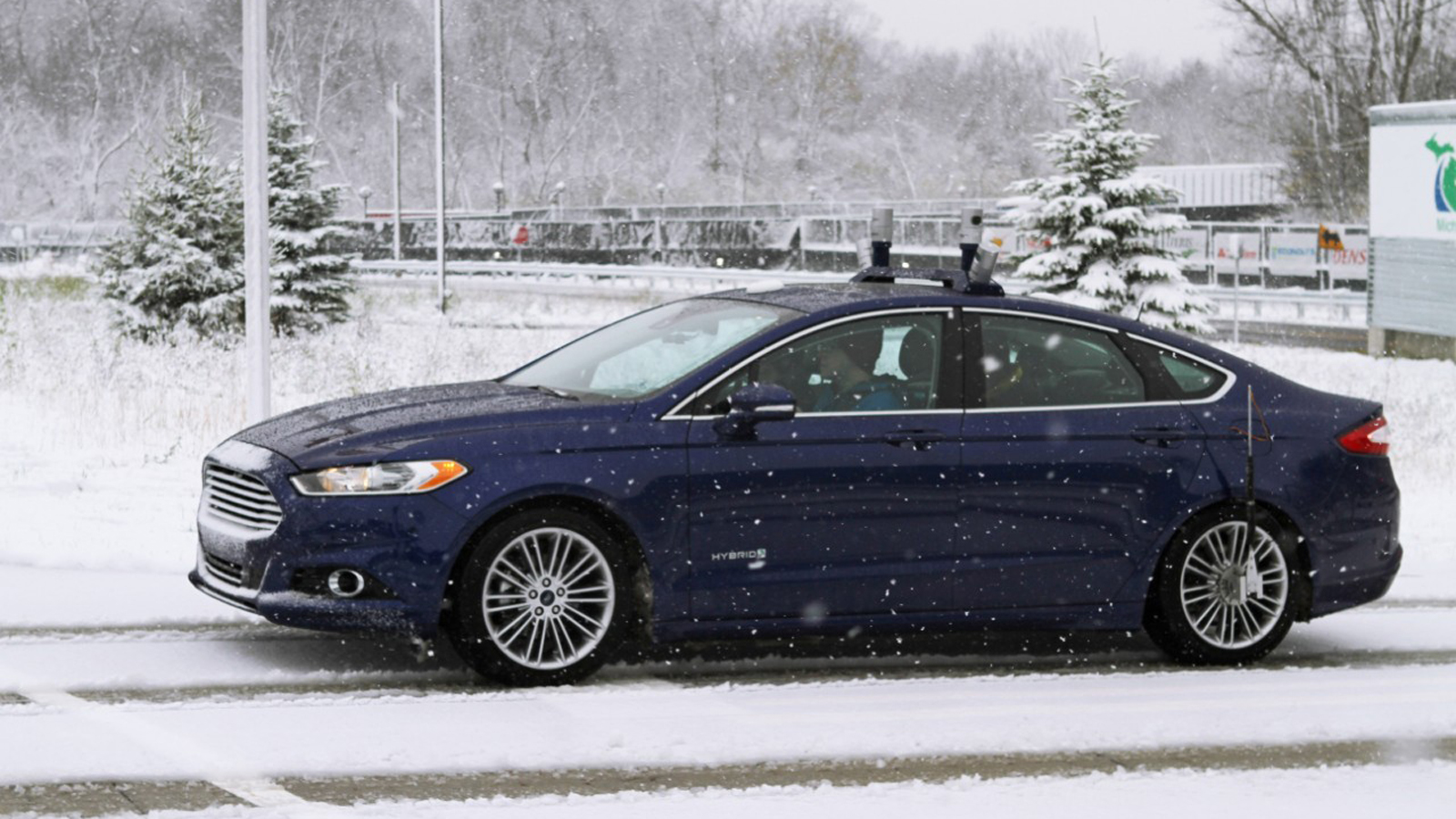Ford tests driverless cars in the snow so you don't have to
It's really snow problem!

Taking advantage of current weather conditions in Michigan, Ford has become the first car maker to begin testing ways to get its self-driving cars through snowy weather conditions.
"It's one thing for a car to drive itself in perfect weather. It's quite another to do the same thing when its sensors cannot sense the road through snow, or when visibility is limited by falling precipitation," said Jim McBride, Ford's technical leader for autonomous vehicles.
This is because most current autonomous car technologies rely heavily on road markings. Falling snow and even heavy rain can obscure the car's cameras, while a heavy snow fall can easily hide road markings, as well as obscure the general shape of roads.
Working with researchers at the University of Michigan, Ford has created a two-step system to help combat these issues, including high-definition 3D maps that includes information about roads, road markings, and signs, as well as the geography of the area and landmarks.
"The maps we created with Ford contain useful information about the 3D environment around the car, allowing the vehicle to localize even with a blanket of snow covering the ground," said Ryan Eustice, associate professor at the University of Michigan's College of Engineering.
All-weather autonomy
The second step involves a LiDAR sensor, which uses short pulses of laser light to help create a 3D image of the car's environment of around 200 meters around, sensing nearby objects and picking up changes in the surroundings compared to the 3D map to help determine the safest path to take.
Ford says these sensors are strong enough to be able to scan accurately in heavy rain or snow falls, even if the car's main camera is covered by snow.
Get daily insight, inspiration and deals in your inbox
Sign up for breaking news, reviews, opinion, top tech deals, and more.
"The vehicle's normal safety systems, like electronic stability control and traction control, which often are used on slippery winter roads, work in unison with the autonomous driving software," said McBride.
"We eventually want our autonomous vehicles to detect deteriorating conditions, decide whether it's safe to keep driving, and if so, for how long."
Ford has a fleet of 30 autonomous cars being tested around the country in California, Michigan and Arizona.
Testing in snowy conditions, which you can check out below, is taking place in Michigan, including at Mcity, the University of Michigan's 32-acre, full-scale simulated real-world urban environment.
- Here's everything you missed from CES 2016